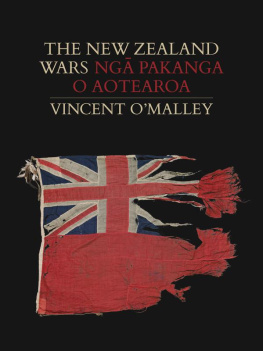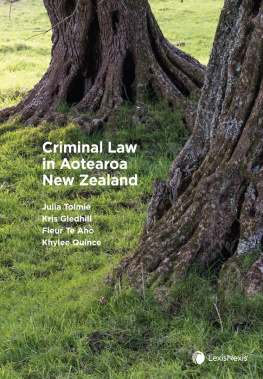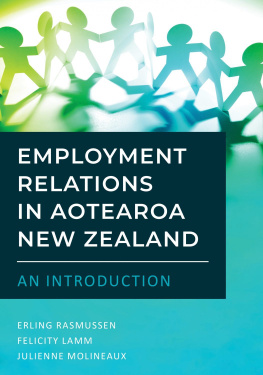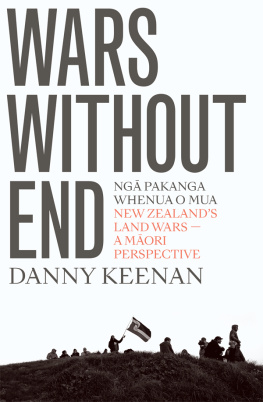Vincent OMalley - The New Zealand Wars: Ngā Pakanga O Aotearoa
Here you can read online Vincent OMalley - The New Zealand Wars: Ngā Pakanga O Aotearoa full text of the book (entire story) in english for free. Download pdf and epub, get meaning, cover and reviews about this ebook. year: 2019, publisher: Bridget Williams Books, genre: Politics. Description of the work, (preface) as well as reviews are available. Best literature library LitArk.com created for fans of good reading and offers a wide selection of genres:
Romance novel
Science fiction
Adventure
Detective
Science
History
Home and family
Prose
Art
Politics
Computer
Non-fiction
Religion
Business
Children
Humor
Choose a favorite category and find really read worthwhile books. Enjoy immersion in the world of imagination, feel the emotions of the characters or learn something new for yourself, make an fascinating discovery.
- Book:The New Zealand Wars: Ngā Pakanga O Aotearoa
- Author:
- Publisher:Bridget Williams Books
- Genre:
- Year:2019
- Rating:4 / 5
- Favourites:Add to favourites
- Your mark:
- 80
- 1
- 2
- 3
- 4
- 5
The New Zealand Wars: Ngā Pakanga O Aotearoa: summary, description and annotation
We offer to read an annotation, description, summary or preface (depends on what the author of the book "The New Zealand Wars: Ngā Pakanga O Aotearoa" wrote himself). If you haven't found the necessary information about the book — write in the comments, we will try to find it.
The New Zealand Wars: Ngā Pakanga O Aotearoa — read online for free the complete book (whole text) full work
Below is the text of the book, divided by pages. System saving the place of the last page read, allows you to conveniently read the book "The New Zealand Wars: Ngā Pakanga O Aotearoa" online for free, without having to search again every time where you left off. Put a bookmark, and you can go to the page where you finished reading at any time.
Font size:
Interval:
Bookmark:

In memory of my father, Bas OMalley (19251985), and my father-in-law, Ian Kidman (19322017)
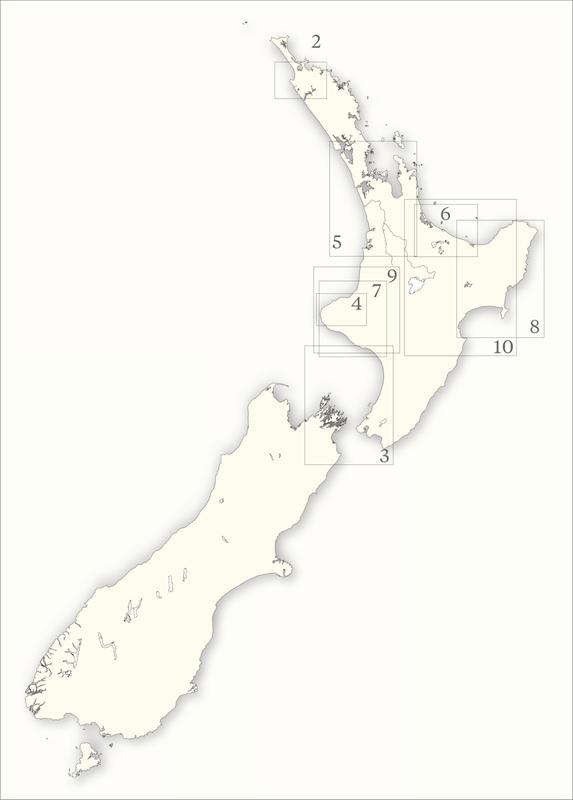
Map 1: This map shows the broad areas where the New Zealand Wars took place. Numbers refer to more detailed maps in chapters 210.
Chapter 1
The New Zealand Wars were a series of conflicts that profoundly shaped the course and direction of our nations history. Fought between the Crown and various groups of Mori between 1845 and 1872, the wars touched many aspects of life in nineteenth-century New Zealand, even in those regions spared actual fighting. Physical remains or reminders from these conflicts can be found all over the country, in cities such as Auckland, Wellington and Dunedin, and in rural locations such as Te Prere and Te Awamutu. Many New Zealanders, Mori and Pkeh, can trace descent from at least one ancestor caught up in these wars. Some people will have forbears who fought on both sides. The wars loom large in the national narrative, but we have not always cared to remember or acknowledge them. For much of the period from 1872, most Pkeh clung to a highly romanticised version of these wars that emphasised mutual chivalry and heroism, avoiding more disturbing truths. When this position was no longer tenable, many simply chose to ignore them altogether. But this is our story, our history. It happened here, in this place, relatively recently, and it had profound consequences for what New Zealand would become. That is why it is so important for us all to understand and acknowledge these conflicts today.
To say that the wars were fought between Mori and the Crown is slightly misleading. For one thing, Mori fought on both sides. Some Mori switched sides, fighting for the Crown and then against it, or vice versa. That was because local and tribal interests were crucial when allegiances were decided, and these could shift quickly depending on the context. Those Mori who fought alongside the Crown, variously branded loyalists, friendlies, Queenites or kpapa, did so in pursuit of their own tribal imperatives. Many Mori communities sought to remain neutral, although that was difficult to do in an area where there was fighting, especially when pressured to align with one side or the other. The Crown view was that Mori were either for it or against it. Neutrality was not considered a valid or acceptable option.
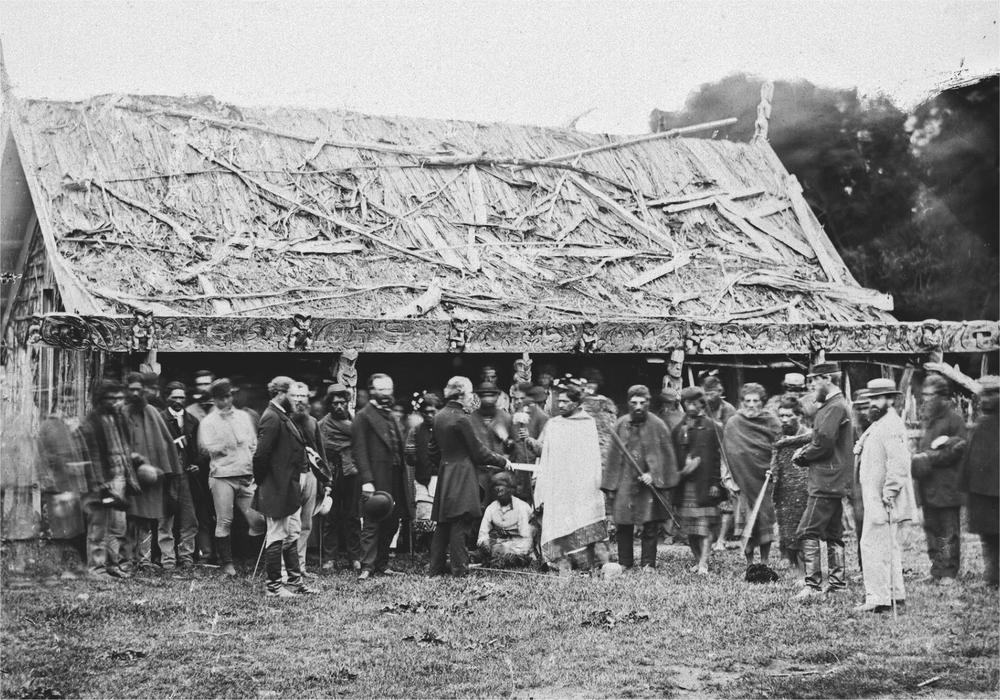
Mori who fought alongside the Crown did so in pursuit of their own tribal imperatives, but the Crown was increasingly reliant on their support as the wars dragged on. Wellington Provincial Superintendent Isaac Featherston (centre) meets with Ptiki Mori to formally thank them for their actions at the Moutoa battle in May 1864. Leading loyalist rangatira Mete Kingi Te Rangi Paetahi is presented with a copy of a Provincial Assembly resolution praising the bravery of his people. Source: Photograph by William Harding, 1864, Alexander Turnbull Library, 1/1-000039-G.
British imperial troops, popularly known as the redcoats after their uniform (although in New Zealand they often fought in a dark blue outfit), did most of the fighting on the Crown side before 1865. In all, fourteen regiments and around 18,000 British soldiers served in New Zealand between 1840 and 1870, the year the final regiment was withdrawn. Along with these infantry regiments, marines and sailors, engineers, artillerymen, and staff of the commissariat, military train and hospital corps also served in New Zealand. For the rank-and-file soldier, life in the British Army at this time was tough. The pay was poor, living conditions were often squalid and alcoholism was rife. Discipline was harsh, with brutal public floggings that sometimes left the grown men who witnessed them in tears. Desertion, understandably, was widespread.
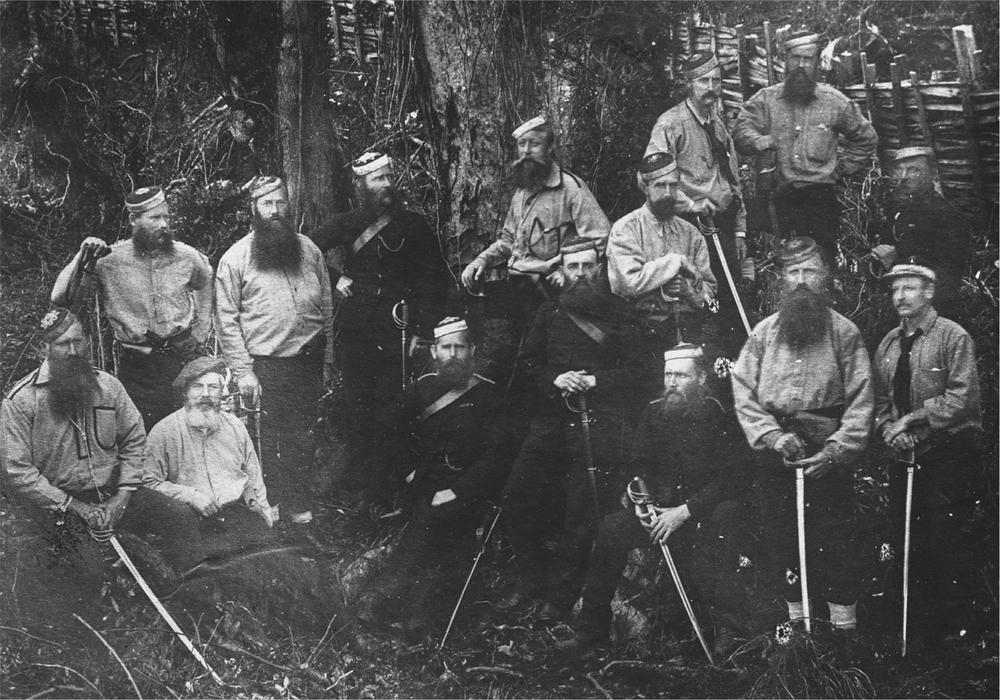
Officers of the Armed Constabulary, photographed at Parihaka in November 1881. Many of the men had previously seen action during the New Zealand Wars. Source: Alexander Turnbull Library, 1/1-017952-G.
Just as loyalist Mori had their own reasons for fighting, so too did many of those who enlisted in the British Army. That was especially so for the large number of Irish Catholic troops who joined. Up to 40 per cent of recruits, and two-thirds of rank-and-file troops who served in the New Zealand Wars, came from Ireland. Many of these men successfully sought their discharge in New Zealand. The army may have left in 1870, but large numbers of former soldiers remained behind as settlers, some marrying Mori women from the very tribes they had recently been fighting.
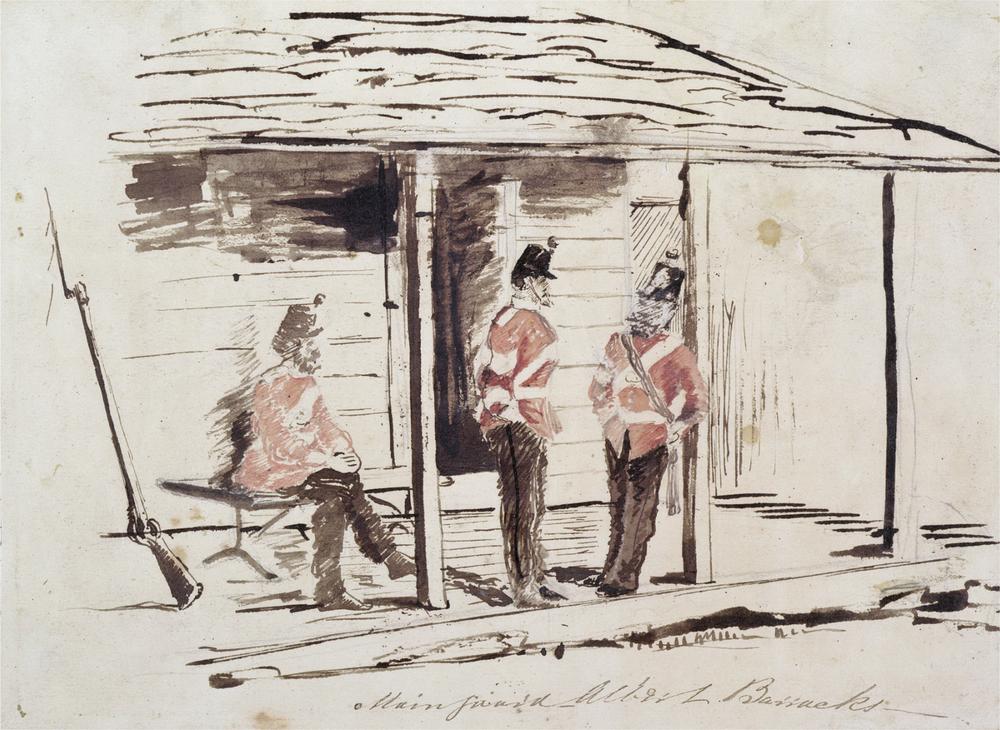
British troops did the bulk of the fighting on the Crown side before being progressively withdrawn from the colony between 1866 and 1870. Three of their number are shown at Albert Barracks, Auckland, in this watercolour painted by Thomas Matravers in the 1860s. The barracks, built after 1846 to defend Auckland from attack, covered more than 23 acres, including the area now occupied by Albert Park and parts of the University of Aucklands central campus. Source: Auckland Libraries Heritage Collections, 3-137-26a.
British imperial troops were progressively withdrawn from the colony between 1866 and 1870 and those who remained during this period took no active role in the fighting, even in moments of great crisis. Settlers relations with the mother country sank to an all-time low as they were forced to look to their own resources (and to loyal Mori) to continue the fight. New Zealand did not have its own standing army until 1862, when the Colonial Defence Force was established. It was limited by statute to no more than 500 men, who would enrol voluntarily for three-year terms of service. Divisions were stationed at various locations around the North Island and were deployed during the Waikato War of 186364.
| 12th East Suffolk Regiment | 186067 |
| 14th Buckinghamshire Regiment | 186066 |
| 18th Royal Irish Regiment | 186370 |
| 40th Somersetshire Regiment | 186066 |
| 43rd Monmouthshire Light Infantry | 186366 |
| 50th Queens Own Regiment | 186367 |
| 57th West Middlesex Regiment | 186167 |
| 58th Rutlandshire Regiment | 184558 |
| 65th Yorkshire North Riding Regiment | 184665 |
| 68th Durham Light Infantry | 186466 |
| 70th Surrey Regiment | 186166 |
| 80th South Staffordshire Regiment | 184044 |
| 96th Manchester Regiment | 184346 |
| 99th Lanarkshire Volunteers Regiment | 184447 |
British infantry regiments and the dates they served in New Zealand
In 1867 the Colonial Defence Force was replaced by the Armed Constabulary, which combined military and policing roles. The Armed Constabulary, along with Mori allies, did most of the fighting for the Crown during the later phases of the New Zealand Wars. They were also prominent in efforts to suppress the non-violent resistance movement to land confiscations that emerged out of Parihaka, in Taranaki, after 1879. This campaign culminated in the invasion of the settlement by 1,600 members of the constabulary and volunteers on 5 November 1881. Later, in 1886, the Armed Constabulary was split into separate military and police units, the forerunners of the modern-day New Zealand police and army.
Font size:
Interval:
Bookmark:
Similar books «The New Zealand Wars: Ngā Pakanga O Aotearoa»
Look at similar books to The New Zealand Wars: Ngā Pakanga O Aotearoa. We have selected literature similar in name and meaning in the hope of providing readers with more options to find new, interesting, not yet read works.
Discussion, reviews of the book The New Zealand Wars: Ngā Pakanga O Aotearoa and just readers' own opinions. Leave your comments, write what you think about the work, its meaning or the main characters. Specify what exactly you liked and what you didn't like, and why you think so.

